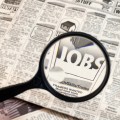 By MARY PATRICK
By MARY PATRICK
Consumer spending rose .1% in July, lower than many experts predicted and also lower than the .6% increase in June, according to the U.S. Department of Commerce.
The average projected increase from 74 experts surveyed by Bloomberg was .3% increase, according to Bloomberg News. The projections ranged from no change to a .5% increase.
Consumer spending is seen as an excellent barometer for the nation’s economy because consumer spending makes up 70% of all economic activity in the United States.
Reasons for the slower growth centered on concerns about the unemployment rate and future availability of jobs, according to experts.
It’s difficult for consumers to increase their spending with “concern about the stability of the labor market, whether they are going to have their jobs,” Gus Faucher, a senior economist at PNC Financial Services Group Inc. in Pittsburgh, told Bloomberg News.
The Commerce Department also reported that the gross domestic product – the gauge for the amount of goods produced and services provided across the country – grew at a 2.5% annualized rate.
The Bloomberg report notes that an increase in jobs would help drive more consumer spending for the obvious reason that more employed people will spend more money. The jobs report for August will not be released until Sept. 6, but Bloomberg estimates that about 180,000 new jobs were added. The country has averaged about 197,500 new jobs per month for the first half of 2013, up from the 180,000 average added each month in the last half of 2012.
Kathee Tesija, executive vice president of Target, said on Aug. 21 that the giant retailer is seeing that the increase in spending on autos and housing is “crowding out” spending on other items and services, according to Bloomberg News.
The Commerce Department also reported that the savings rate among Americans in July was 4.4%, the lowest it has been since (4.3%).
Investors and financial professionals on Wall Street are keeping a close eye on consumer spending and inflation, which is remaining flat with consumer spending not increasing by much. Without much inflation pressure, an argument could be made that the Federal Reserve could cut down on the $85 billion in bond purchases it is making to keep interest rates low.
Some economists are projecting that the central bank will make a modest trim in what it is spending on bond buying during a policy meeting scheduled for Sept. 17 and 18.





